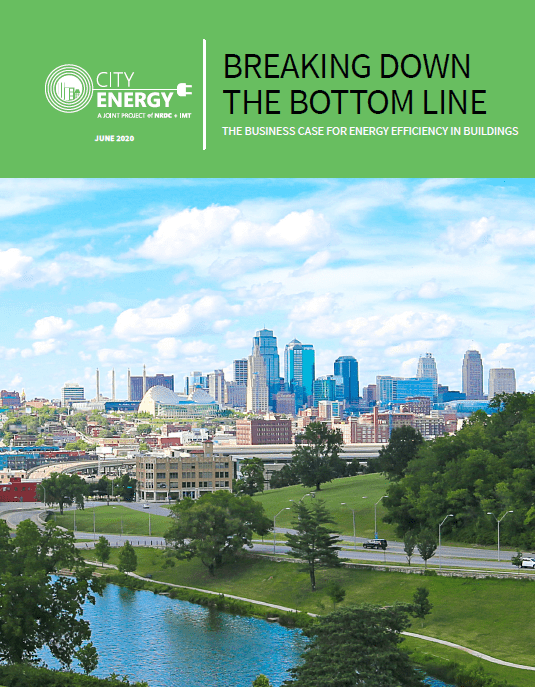What is the business case for energy efficiency in buildings? Earlier this year, the City Energy Project—a joint initiative of IMT and the Natural Resources Defense Council—sought to tackle this question by interviewing executives at three leading real estate companies. In synthesizing their feedback in a recently released report, CEP aimed to identify commonalities that make up the business case for efficiency.
“Breaking Down the Bottom Line: The Business Case for Energy Efficiency in Buildings” distills the process of making the business case into two “whys”—the hard numbers of operating costs, net income, and value; softer elements such as company values, brand and market competitiveness—and two “hows”—how to define and justify projects with data and how to operationalize efficiency and energy management internally. Here, we layer on some helpful tools tenants and landlords can use to strengthen that business case internally.
Tools to Help ID Your Priorities
For years, IMT has helped commercial landlords and tenants take action on improving their space. One helpful tool to starting this process is IMT’s Landlord-Tenant Energy Partnership Efficiency Toolkit. The toolkit guides users on strategies for accelerating efficiency and improving building performance to meet a host of internal goals. It focuses on how to operationalize solutions that contribute to a higher-performing building, including how to integrate energy efficiency work with policy and behavior change, as well as measuring and maintaining progress. It is comprised of core strategies and associated steps that aim to produce building-specific analyses that support internal arguments for greater energy efficiency and sustainability.
In addition, IMT offers some targeted resources that identify common challenges and potential solutions. For landlords and tenants in the retail sector, IMT partnered with the Retail Industry Leaders Association, the International Council of Shopping Centers, and Connex to identify the Six Biggest Hurdles in Leased Retail Space. And, for those owners looking to build a business case around the need to invest in building performance and reduce carbon emissions, Overcoming Seven Key Landlord-Tenant Hurdles to Make Ambitious Carbon Reductions a Reality, calls out some prominent challenges. Both pieces also examine how energy efficiency fits into the larger business case for the softer arguments of ESG reporting and company reputation.
How the Competition Does It
Many internal arguments for sustainable practices are made more compelling by including competitors as a point of reference. IMT offer a range of case studies that landlords and tenants can use to better understand how their peers are building a case for—and executing—building improvements. For example, the multinational clothing-retail company H&M shows how they are addressing ambitious sustainability targets in ways that lead to savings for both their operations and for the building owners where their stores are located.
IMT is a strong proponent of deploying the lease to maximum win-win advantage, and using green leases to do this. IMT’s report “What’s in a Green Lease” continues to be an often-reference industry resource on the potential impact of green leases in the office sector. Additionally, IMT’s resource library and the Green Lease Leaders resource library contain a range of case studies on how this is being executed today, from retail and service companies as well as local governments, data centers, and industrial entities.
Technical Resources to Get Started
When it comes to getting into the grittier details of taking action on efficiency, IMT has a number of companion resources that provide guidance to help readers work through technical details. The Green Lease Leader program mentioned above also provides helpful primers and documents, including green lease language examples, which consolidate a variety of green lease language options for more efficiently designed and operated spaces. How to Choose the Right Energy Management Information System (EMIS) provides questionnaires that help users hone in on the EMIS that best help them identify low- and no-cost improvements while strengthening the business case for investing in efficiency upgrades.
Finally, for retail businesses seeking to explore their financing options, IMT and RILA have produced guides to both internal financing and external financing options. In DC, IMT is managing the District’s newly launched Building Innovation Hub which provides guidance on financing projects, finding vendors, case studies, and more.

